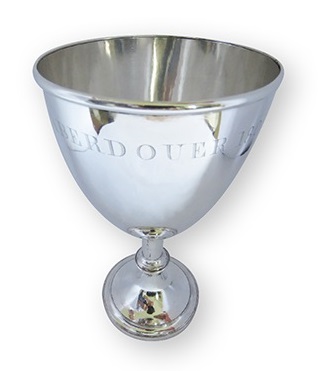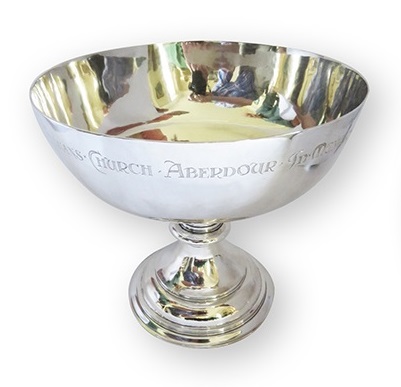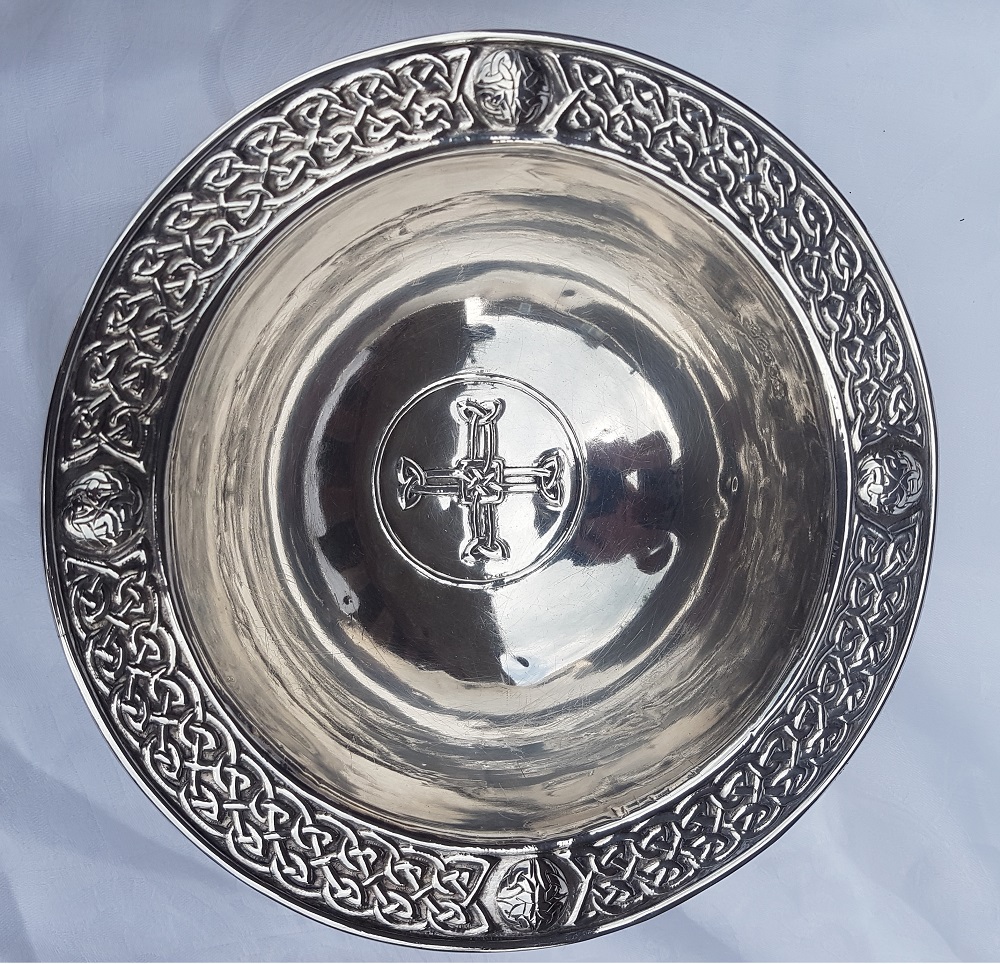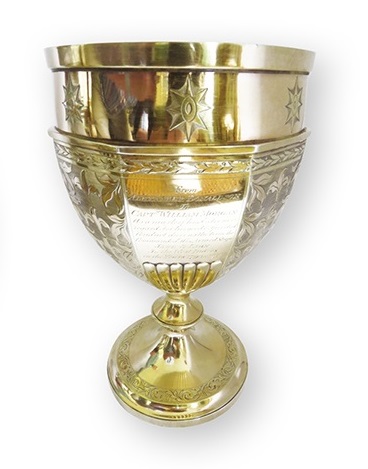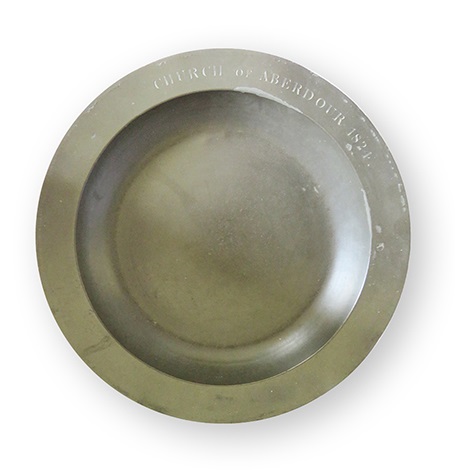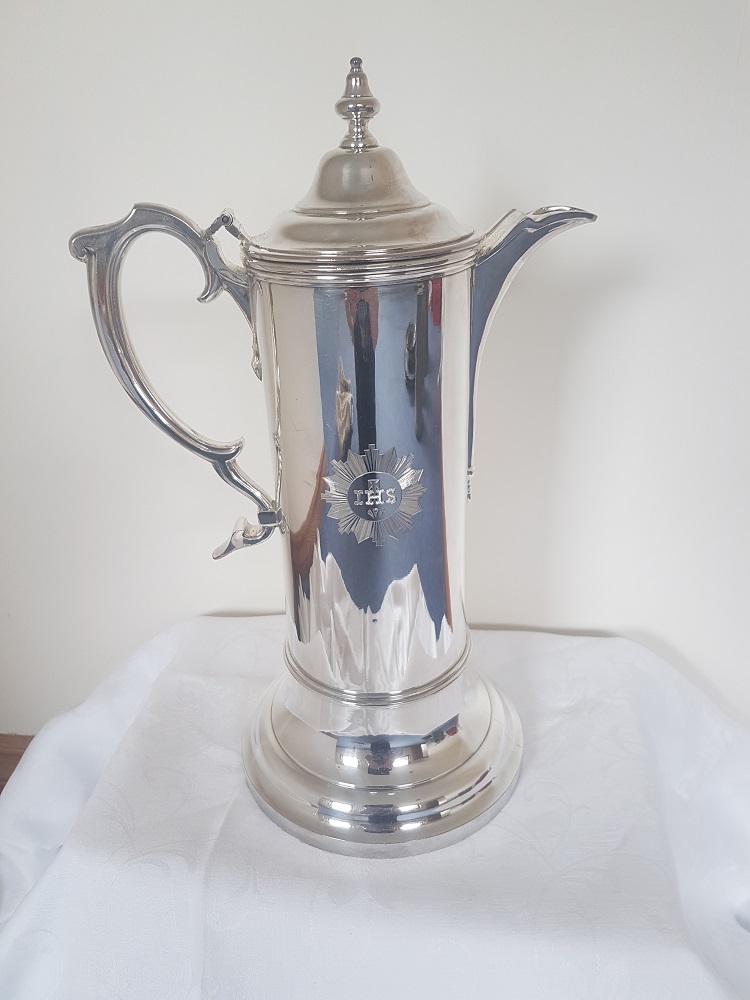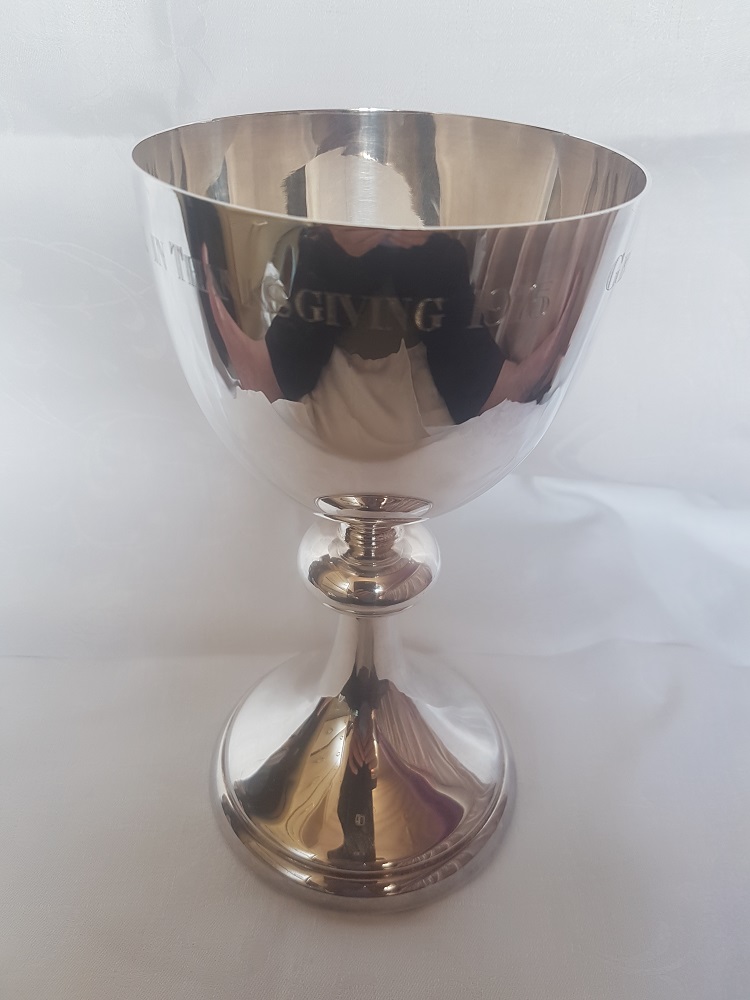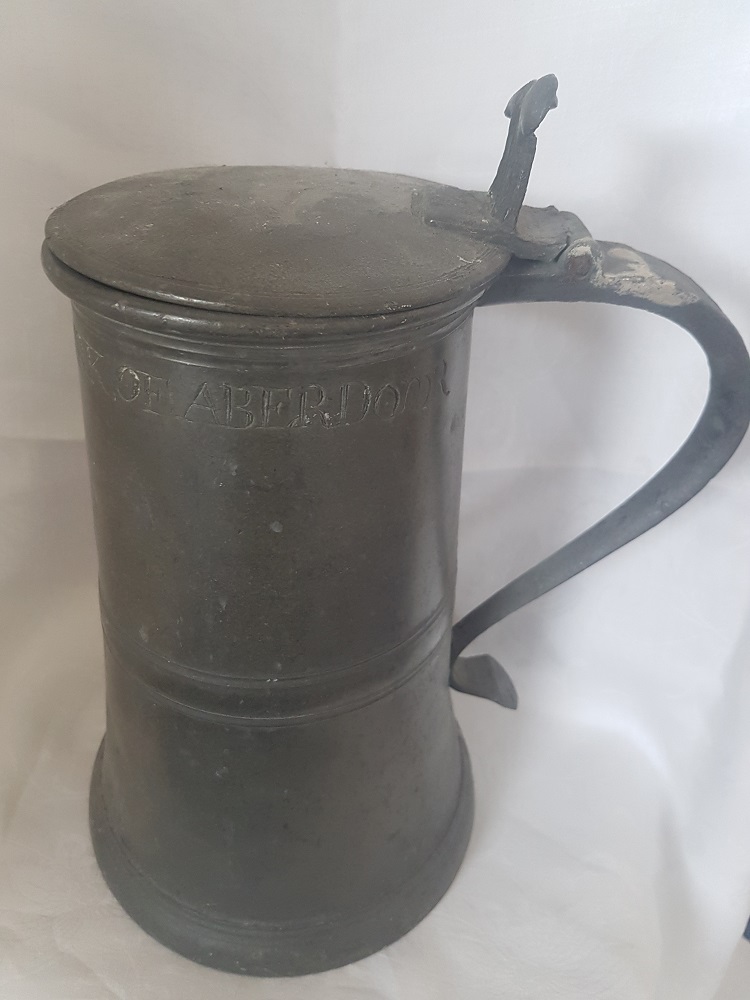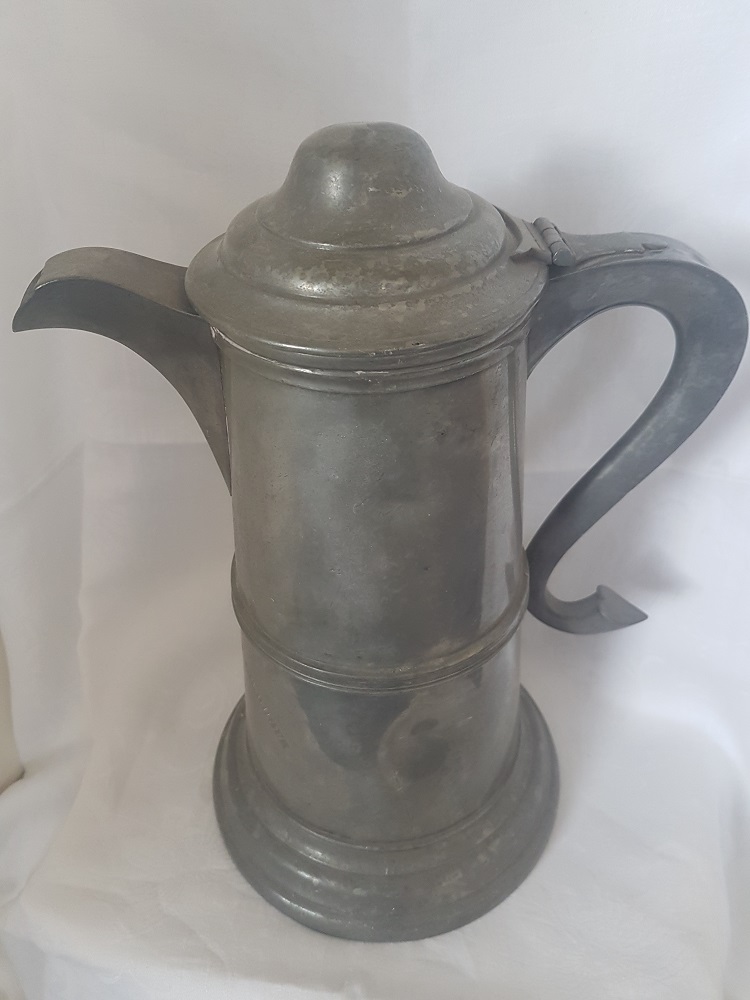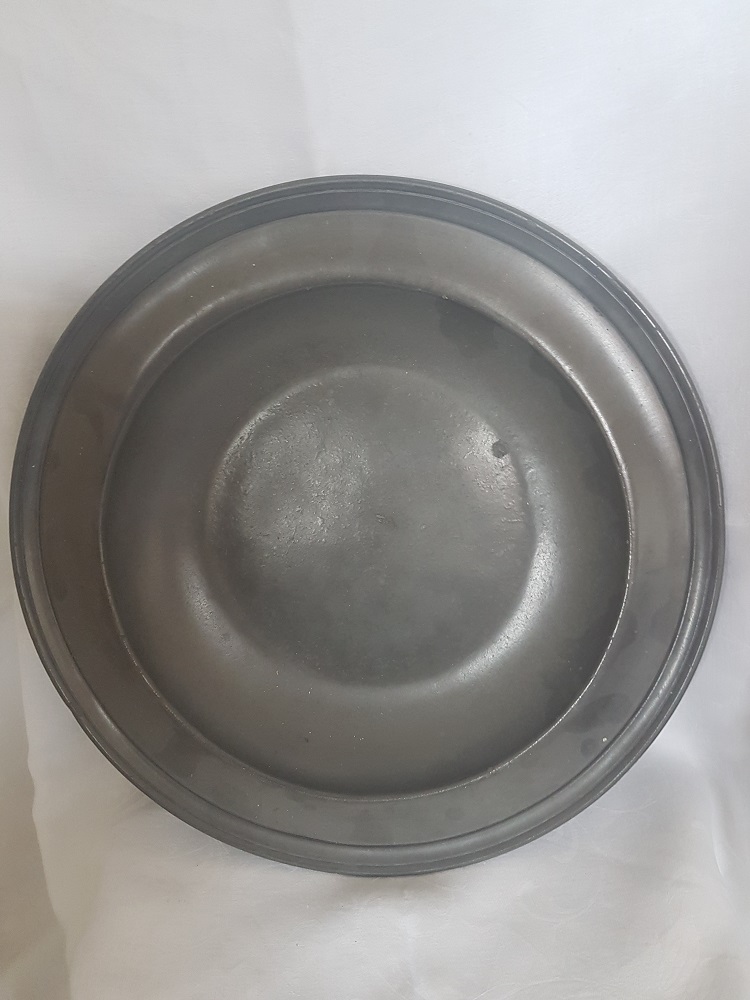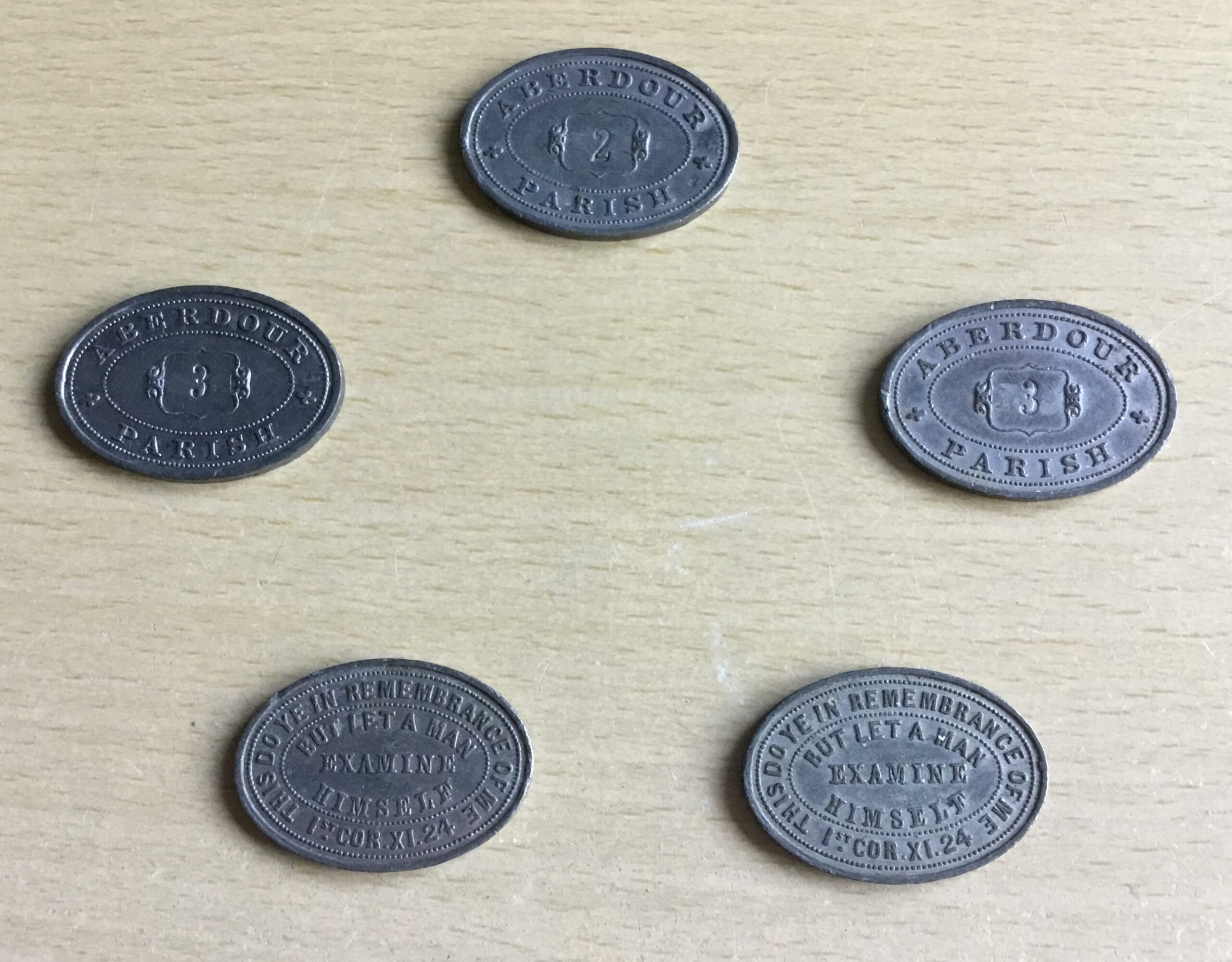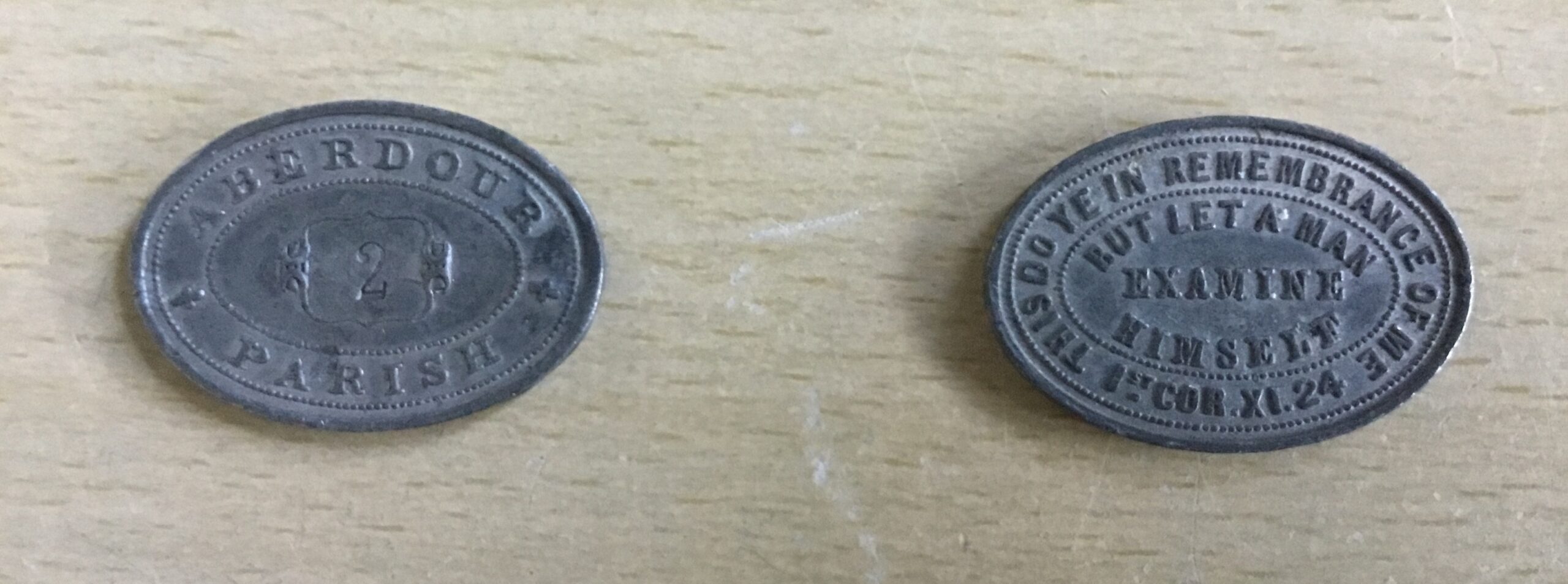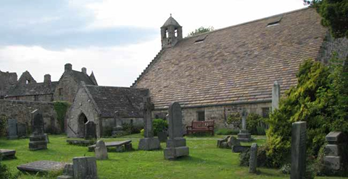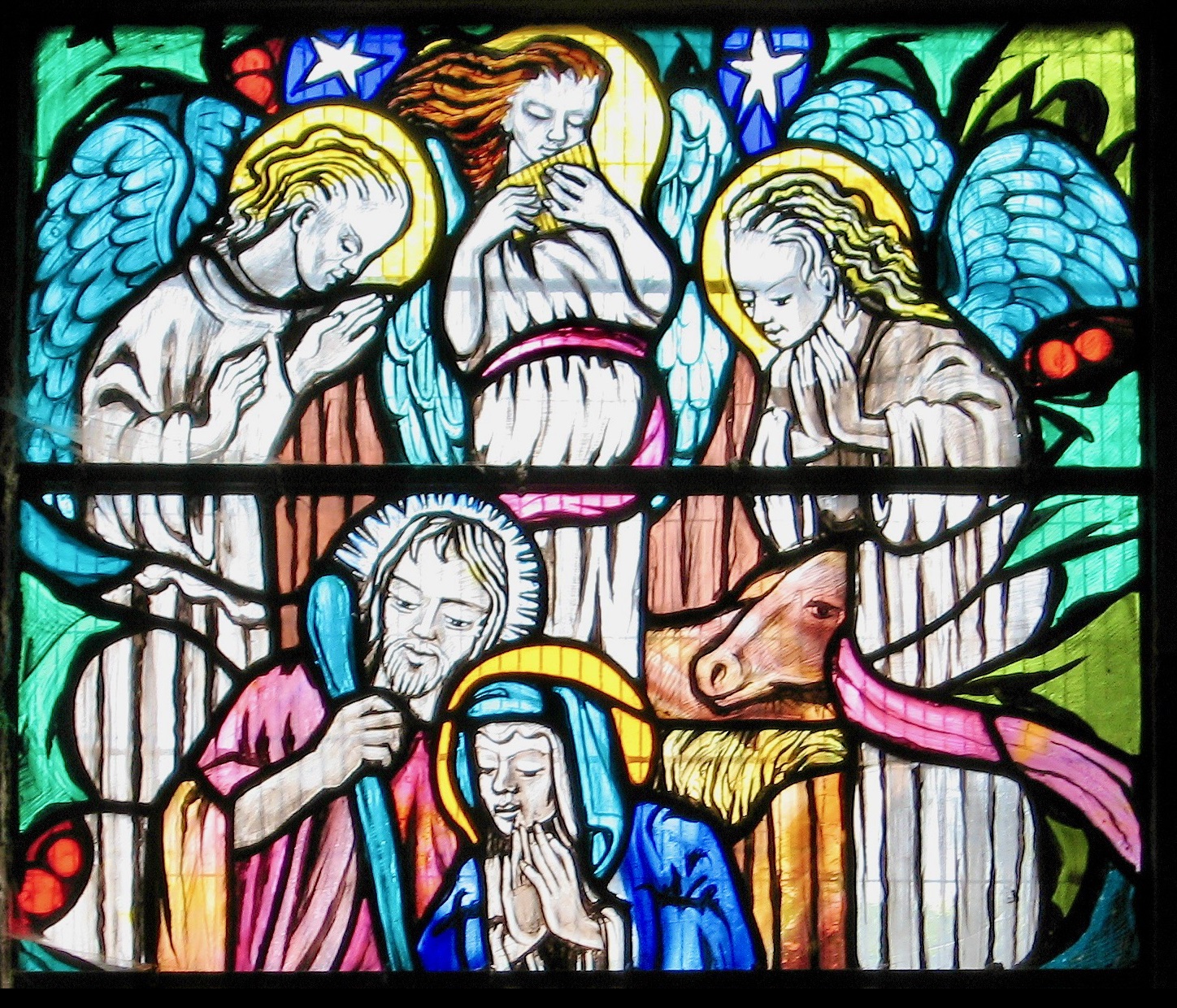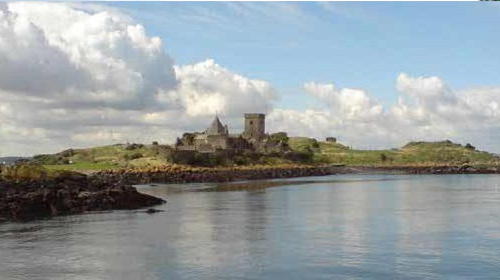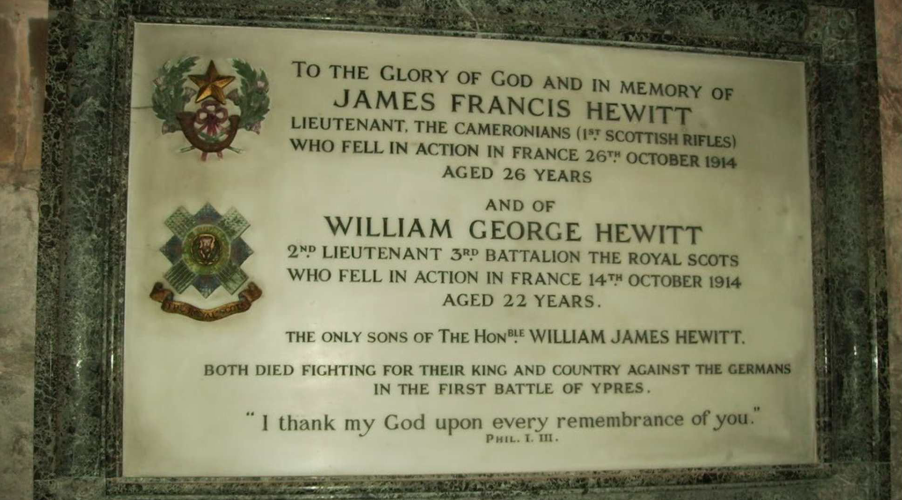History
Examples of Church Silver
The Church has communion silver dating back to the early 19th century. All the Church silver is kept in a bank vault.
Communion Chalice
This is one of a set of four elegant two hundred and twenty year old silver Communion Chalices. The inscription on these has an unusual spelling of ‘Aberdour’, it reads: “CUPS FOR THE CHURCH OF ABERDOUER 1800”.
This bowl is used for bread at Communion. The inscription says: “Gifted To Saint Fillans Church Aberdour In Memory of Jean Spowart Graham Cunningham Dalachy 9th January 1928” The Ciborium was made by Wilson and Sharp, Silversmiths, Princes Street, Edinburgh. It has an Edinburgh mark for 1929.
This silver bowl was contributed to by Children of the congregation when St Fillan’s was restored. It was made on lona by Alexander Ritchie, (the famous pioneer of the Celtic crafts revival) who died aged 85 in 1941. The bowl is hall marked ‘Glasgow 1926. Since then it has been used in the font for every Sacrament of Baptism.
The William Morgan Cup
William Morgan (born and christened in Aberdour 1762) went to sea like his father, and eventually became the captain of a privateer warship during the Napoleonic wars.
Privateers could be little more than government-licensed pirates who preyed on enemy (in this case French), shipping to make a good living from their booty, at no expense to the Treasury. Morgan was given this large silver gilt goblet by one of his backers as a token of esteem for his vigorous way with the French in 1796 and 1797 in the Caribbean.
In his will made shortly before his death in Jamaica in 1815, Morgan left this cup to Aberdour Church, to be used for sacramental purposes. After a long delay it was finally received by the parish in 1842.
It makes a startling and flamboyant communion cup from something perhaps a little morally ambiguous. St Fillan’s own Pirate of the Caribbean. The hallmark on the cup shows the sovereign head ‘duty mark’ certifying the payment of the duty; the lion, the symbol for London and the date letter for 1799 and the letters `JE’ for John Emes (1798-1807).
Inscription:
‘From
Alexander Donaldson
To Captn William Morgan
As a mark of his esteem & regard for the good & spirited
conduct during the time he
commanded his armed ship
Jane & Lion
in the West Indies
in the year 1796 & 1797’.
Pewter Chargers
This is one of three very heavy chargers, The flat plates, engraved ‘Aberdour Fife 1825’, measure forty seven centimetres in diameter (eighteen and a half inches). This one with a deeper bowl is slightly smaller (41cm, sixteen inches) and engraved ‘Church of Aberdour 1824’. These must have been used in St Fillan’s Church before it was unroofed.
This information was provided by the Aberdour Heritage Centre.
Silver Flagon
Electroplated Nickel Silver, date unknown, inscription ‘IHS’, used at communion until late 1990’s
Pewter Flagon
One of two pewter flagons, date unknown, inscription ‘Flagons for the Kirk of Aberdour’. Pewter is easy to work and extremely versatile, which lends itself to a variety of uses
Pewter Flagon
Pewter Flagon, date 1865, inscription ‘1865 Parish Church of Aberdour’.
Pewter is made from 85–99% tin, mixed with copper, antimony, bismuth, and sometimes lead.
Communion Tokens
A communion token is a metal token issued to members in order to provide them entrance to the Lord’s Supper.
There were many types issued in Scotland in the 18th and 19th centuries, but they were largely superseded by communion cards.
Here are example from St Fillan’s Church. They have the inscription: This do in remembrance of me 1 Corinthians 11:24 and But let a man examine himself (1 Corinthians 11:28).
Learn More
History
The Early Years
Restoration
Stained Glass
Inchcolm Abbey
Church Hall
The Hewitt Brothers
